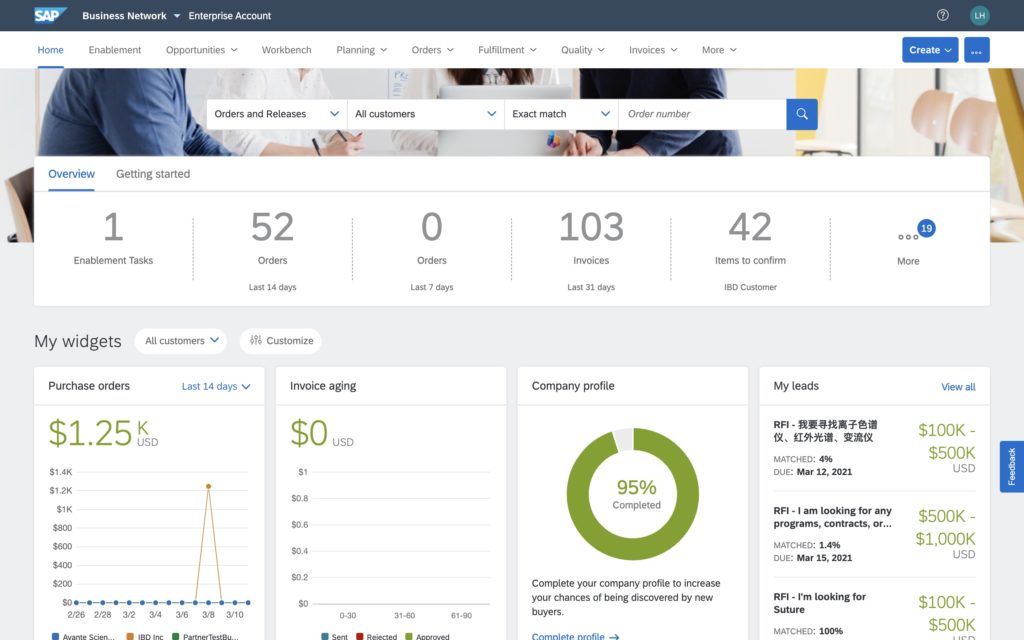M+E Daily

SAP Exec Touts the Company’s Latest Innovations
Story Highlights
SAP’s latest innovations, as well as its sustainability initiatives were highlighted by Thomas Saueressig, head of product engineering at SAP and a member of its executive board, on June 17 during the Goldman Sachs Europe Digital Economy Conference.
Topping the list of recent innovations he cited was the SAP Business Network that the company announced at its global SAPPHIRE NOW conference in early June. The Business Network is the first step in SAP’s plans to “create new business communities able to improve business outcomes, better navigate changing economic and geopolitical conditions and enhance sustainability contributions,” it said June 2.
“We are living in a globally networked world and that’s the reason why we want to actually pivot to the network of intelligent enterprises,” Saueressig said. “This is something where we, with our unique SAP Business Network, the largest business network of its kind, with more than 5.5 million trading partners, really want to ensure that every company has… sufficient flexibility. And we see that now in the pandemic more than ever that agility is key for resilience.”
The Business Network brings together the Ariba Network, SAP Logistics Business Network and SAP Asset Intelligence Network, he explained. This will “really connect the carriers, the manufacturers, logistic providers, suppliers together in this network to really represent the entire value chain,” he said.
 The “deep visibility” that SAP’s more than 5.5 million trading partners will get is “absolutely essential, especially in these times where… we already now read on a daily basis how fragile the supply chain is,” he pointed out. This will enable those companies to be able to quickly change and flexibly adapt to changes in the supply chain, such as “shortages of certain materials,” he explained.
The “deep visibility” that SAP’s more than 5.5 million trading partners will get is “absolutely essential, especially in these times where… we already now read on a daily basis how fragile the supply chain is,” he pointed out. This will enable those companies to be able to quickly change and flexibly adapt to changes in the supply chain, such as “shortages of certain materials,” he explained.
Meanwhile, “if you think about the biggest challenge of our time, this is about sustainability,” he said, explaining: “If you think about sustainability, we all know that the CO2 footprint is actually in fact [much] larger in the supply chain outside of the four walls of the company and… that’s the reason that we now embed sustainability dimensions natively in all of our applications to help to become a sustainable world in the future.”
Sustainability is something that is “not only dear to my heart, but it’s ingrained in our company culture and strategy,” he noted, adding: “That’s also the reason why we, since 2012, [provide] an integrated report also including sustainability” key performance indicators (KPIs) as a company and, “for instance, also have in our data centers only renewable energy since 2014 already, and why I’m actually proud that we could accelerate our ambition to become carbon neutral by 2023.”
SAP needs to be not only a “good exemplar, like what we represent in the 14th consecutive year of the Dow Jones Sustainability Index as the leading software company for sustainability, but also we need to be an enabler,” he told listeners. When talking about SAP’s more than 400,000 customers, “we absolutely have the obligation to help our customers to not only analyze the carbon footprint, for instance, but also to actually reduce it and give them the vehicles to do that,” he said.
To operationalize sustainability as a core business process, SAP earlier this month also announced a portfolio of new sustainability-specific products. They included the SAP Responsible Design and Production solution to ensure product designers can make sustainable choices from initial product concepts to production; the SAP Product Footprint Management solution to track sustainability through a product lifecycle; and the SAP Sustainability Control Tower solution to provide end-to-end visibility.
The SAP Product Footprint Management solution allows customers to “tap into” SAP’s data “to really calculate the footprint of each and every single product and portfolio, which you then can automate,” Saueressig said.









